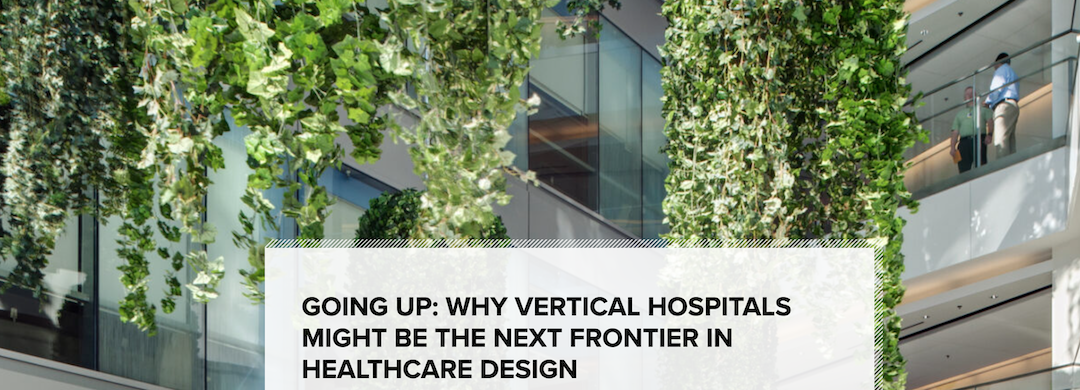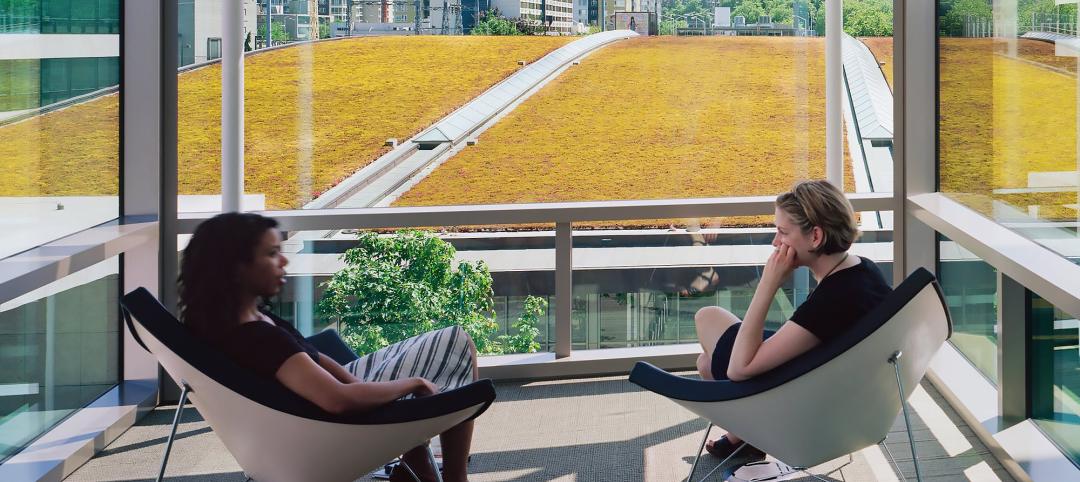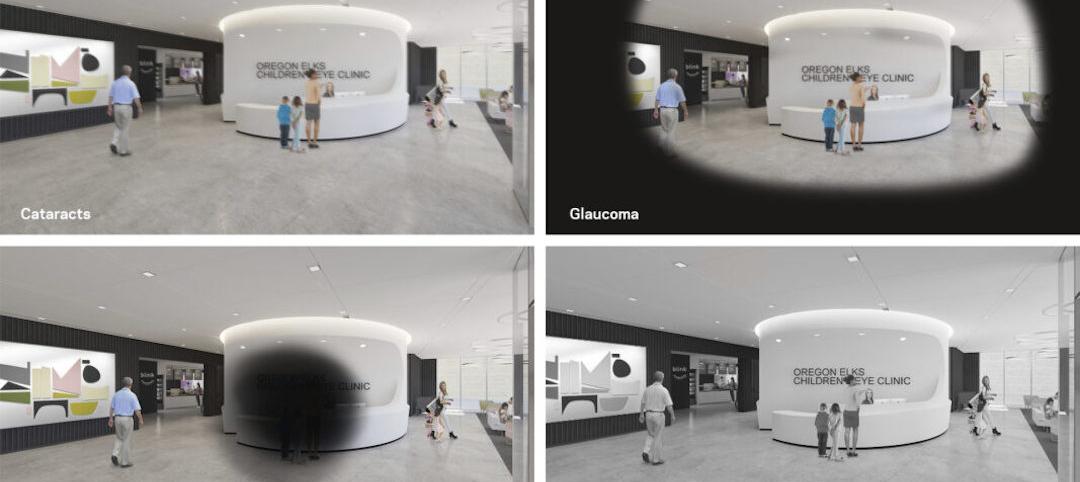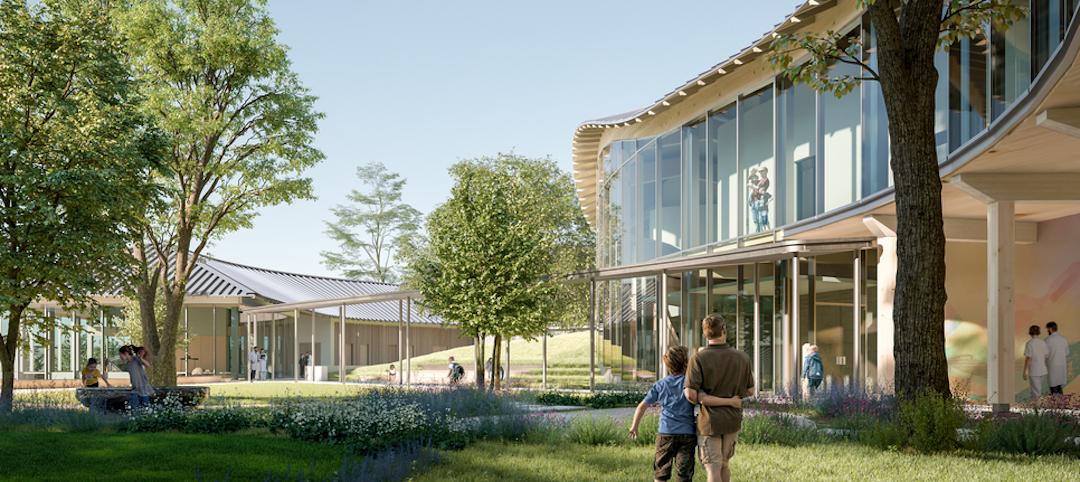As cities densify, land values increase and the need for outpatient care services rise, hospitals are increasingly challenged to find space to expand. While true in many regions, this is especially so in cities like New York and Singapore, where vertical hospitals are a viable, and in some cases the only, option for significant hospital expansion.
At NBBJ, we practice primarily in urban centers and specialize in healthcare design. So, when faced with this challenge for a project in London, we designed a vertical “healthcare village” concept that focuses on greater efficiency and experience. In this article, we’ll explore the opportunities and challenges of high-rise hospital design, as well as the main ideas and themes we considered when designing the new medical facility for the heart of London.
Opportunities and Challenges
The concept of healthcare villages—multi-use environments that integrate healthcare with commercial, residential and other services—has evolved for over a decade. The first healthcare village in the United States, the Metro Health Village in Michigan, opened in 2007, and Guys and St. Thomas’ NHS Foundation Trust in the UK refers to various spaces within the hospital’s Cancer Centre using this terminology. But the concept of vertical hospital design and vertical villages has only recently gained popularity.
Part of the need for a high-rise hospital village concept is the increasing co-location of clinical and research functions. This trend creates more travel between buildings and campuses, which then leads to an inconvenient and unproductive experience for staff. Tall hospitals can contribute to a better experience by minimizing the movement of patients throughout the building, locating key equipment and services closer to patients and bringing more services to a diverse population. And, because they are often located in urban environments, vertical hospitals can tap ancillary revenue streams like leasing out ground floor retail or building in conference or meeting space to bring retail and other services to neighborhoods.
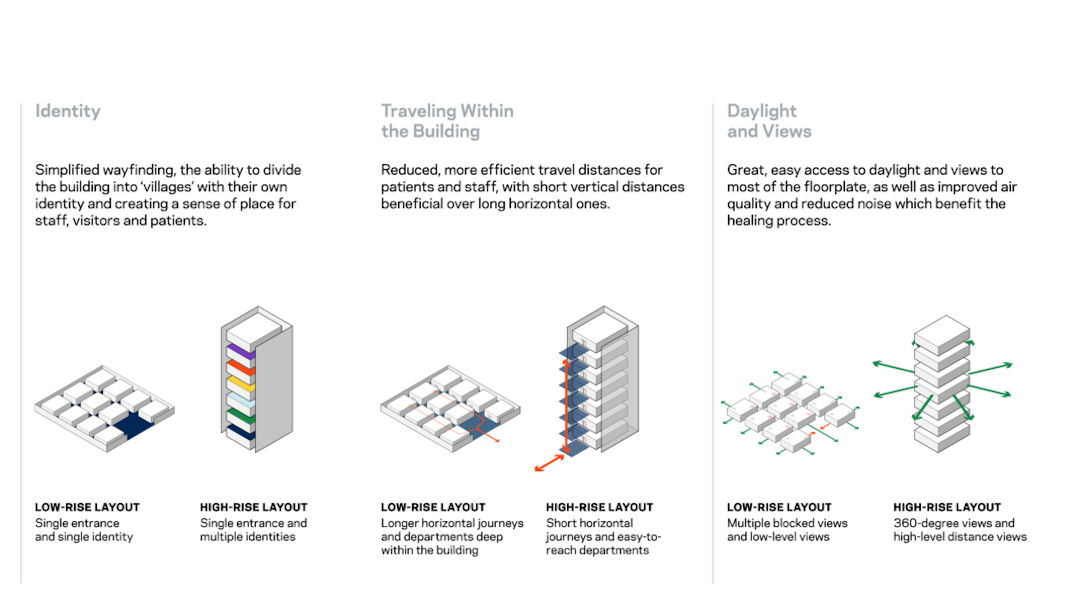
However, high rise structures are complex and designing for healthcare brings additional challenges. Airflow, MEP equipment and structural engineering must all be considered. Healthcare environments are also likely to experience future expansion and adaptation, so considerations like building load capacity in columns and floors, fire proofing and utilizing a modular grid must be addressed to ensure that the building is flexible. And, without the benefit of separate buildings for separate practices, creative wayfinding, connection and patient and caregiver flow solutions are important in the design of vertical healthcare environments.
A Series of Vertical Villages
When tasked with designing a vertical hospital village in London, we applied our expertise in designing both healthcare environments and high-rises to redefine what a city center hospital can be. Different villages or hubs for education, private and inpatient care, maternity, critical care, pediatrics and imaging are located on separate levels and defined by greenery, winter gardens and landscaped terraces and walking paths throughout. Technical considerations such as efficient vertical transportation and core size, as well as employing off-site and modular construction for select elements, are key to maximizing the available footprint. Three main design aspects guided our vision and successful implementation of the vertical healthcare village:
Form and Function
In our concept, the villages are given different identities but possess the same ingredients in terms of access to the outdoors, greening, and collaborative and family spaces. This differentiation also helps to break up the overall mass and provide visual interest, and simplifies wayfinding, creating a sense of place for staff, patients and visitors. Individual elements of the facade vary according to orientation and use within but share an inherent verticality collectively benefitting the proportions. Finally, all heavy equipment is housed in the lower levels, with the less technical floors situated above. This contributes to a stronger structure to counteract vibration and offers flexibility within both the structural environment and technical spaces.
Staff and Patient Experience
Diverse environments within the space support normalcy for patient families, emphatically integrating caregivers and families into the care process. Amenities like yoga and dining, and places for respite with access to nature and views nurture staff’s well-being as well as that of the patients and their families. And, short vertical distances are prioritized over long horizontal distances, which means more efficient travel for both patients and staff.
A Healing Environment
The internal experience for staff, patients and families explores the relationship between health and physical space to streamline operations, enrich the staff and patient experiences, and improve outcomes in healthcare delivery. Considerations such as enhanced access to daylight and views to most of the floorplate, as well as improved air quality and reduced noise benefit the healing process.
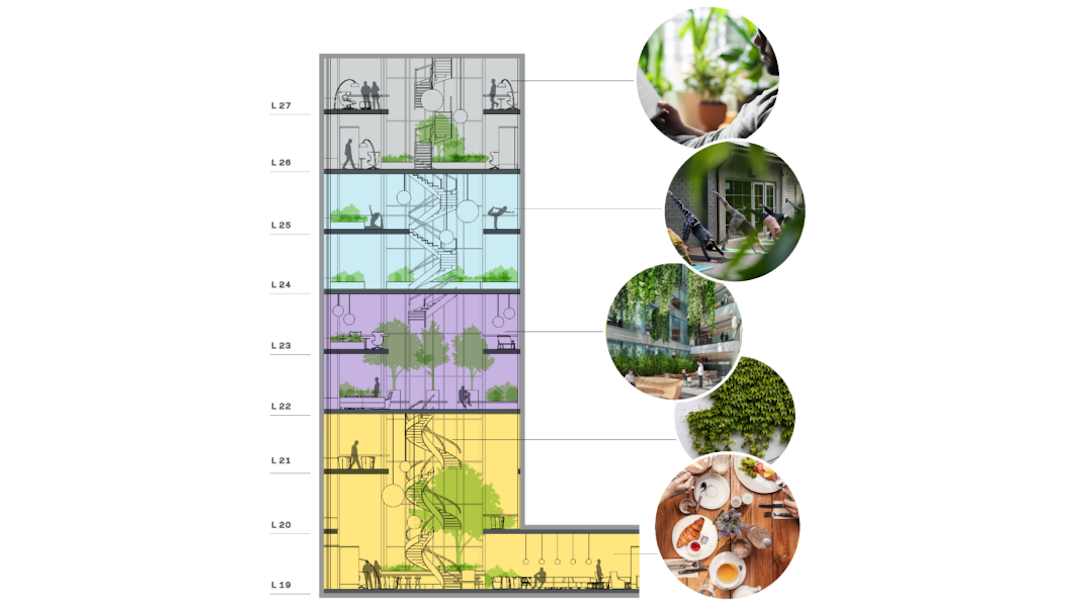
With gains to be made in staff and patient experience, excellence in clinical delivery and build efficiency from modular construction of towers — especially in tight urban environments with limited space for construction—going up may be the way forward for healthcare provision in urban environments.
More from Author
NBBJ | Oct 3, 2024
4 ways AI impacts building design beyond dramatic imagery
Kristen Forward, Design Technology Futures Leader, NBBJ, shows four ways the firm is using AI to generate value for its clients.
NBBJ | Jun 13, 2024
4 ways to transform old buildings into modern assets
As cities grow, their office inventories remain largely stagnant. Yet despite changes to the market—including the impact of hybrid work—opportunities still exist. Enter: “Midlife Metamorphosis.”
NBBJ | May 10, 2024
Nature as the city: Why it’s time for a new framework to guide development
NBBJ leaders Jonathan Ward and Margaret Montgomery explore five inspirational ideas they are actively integrating into projects to ensure more healthy, natural cities.
NBBJ | Oct 18, 2023
6 ways to integrate nature into the workplace
Integrating nature into the workplace is critical to the well-being of employees, teams and organizations. Yet despite its many benefits, incorporating nature in the built environment remains a challenge.
NBBJ | May 8, 2023
3 ways computational tools empower better decision-making
NBBJ explores three opportunities for the use of computational tools in urban planning projects.
NBBJ | Jan 17, 2023
Why the auto industry is key to designing healthier, more comfortable buildings
Peter Alspach of NBBJ shares how workplaces can benefit from a few automotive industry techniques.
NBBJ | Aug 4, 2022
To reduce disease and fight climate change, design buildings that breathe
Healthy air quality in buildings improves cognitive function and combats the spread of disease, but its implications for carbon reduction are perhaps the most important benefit.
NBBJ | Feb 11, 2022
How computer simulations of vision loss create more empathetic buildings for the visually impaired
Here is a look at four challenges identified from our research and how the design responds accordingly.
NBBJ | Jan 7, 2022
Supporting hope and healing
Five research-driven design strategies for pediatric behavioral health environments.
NBBJ | Aug 18, 2021
20 years after developing the first open core hospital design here is what the firm has learned
Hospitals have traditionally used a “racetrack” layout, which accommodates patient rooms around the exterior and situates work areas and offstage functions in a central block.

